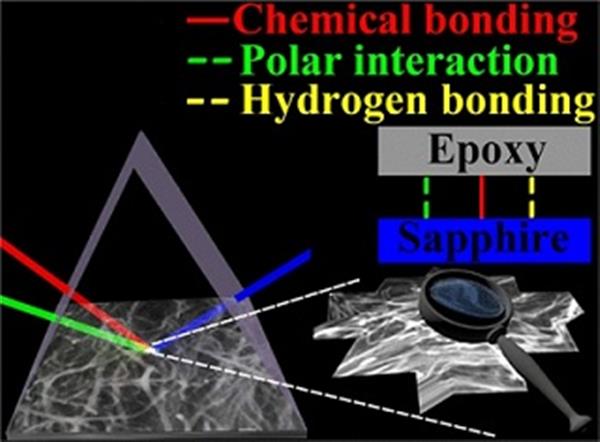Molecular-Level Correlation between Spectral Evidence and Interfacial Bonding Formation for Epoxy Adhesives on Solid Substrates
writer:Zhaohui Xu, Yinyu Zhang, Yeping Wu,* Xiaolin Lu*
keywords:Epoxy, SFG, Sapphire, Silica, Interface, Adhesion, Molecular Structures. Curing
source:期刊
specific source:https://pubs.acs.org/doi/10.1021/acs.langmuir.2c00470
Issue time:2022年
Interfacial bonding strength of an epoxy-based adhesive depends on the interfacial interaction between the adhesive and the substrate. Normally, the curing process at the interface accompanied by the interfacial bonding formation is different from that in the bulk, and it is still a big challenge to probe the interfacial bonding formation at a molecular level. In this study, to trace the interfacial structural evolution of a representative formula of epoxy (digylcidyl ether of biphenyl A, DGEBA) and amine hardener [1,2-bis(2-aminoethoxy)ethane, EDDA] with the sapphire and silica substrates upon curing and post-curing steps, sum frequency generation (SFG) vibrational spectroscopy is employed to detect the molecular-level interfacial structural information. For the sapphire substrate, upon curing, backbone methylene (CH2) stretching signals decrease, indicating the formation of a rigid chain network structure and thus losing the local methylene order, while vibrational signals of the sapphire surface hydroxyl (OH) groups (including hydrogen-bonded and unbonded) increase significantly, indicating the formation of a strong hydrogen-bonding and polar interaction between the epoxy adhesive and the sapphire surface. Upon post-curing, increased backbone CH2 signals and decreased sapphire OH signals suggest interfacial chemical bonding formation due to the reaction between the epoxy rings and the sapphire surface OH groups. Orientation analysis confirms the enhanced ordering of the sapphire surface OH groups upon curing and post-curing, in comparison to the uncured epoxy formula. As for the fused silica, weak vibrational signals of the methylene (CH2) and methyl (CH3) groups are observed before curing, while both of them increase slightly for the cured and post-cured epoxy formulae, suggesting relatively less hydrophilic nature of the silica surface compared to that of the sapphire surface, also evidenced by the very weak OH signals upon curing and post-curing. Further measurement on the adhesion strength matches up with the above spectroscopic experimental results, substantiating the correlation between the macroscopic bonding strength of the epoxy adhesive and the microscopic molecular-level structure.
https://pubs.acs.org/doi/10.1021/acs.langmuir.2c00470